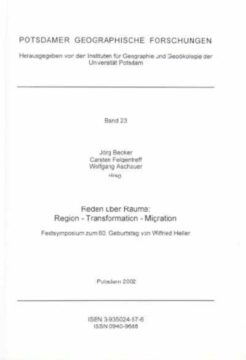Gangsta rap in Germany is particularly male-dominated and commercially very successful as a music genre. It is one of the very few areas in which designs of masculinity are not largely threatened as yet.
At the end of 2011, female gangsta rapper Schwesta Ewa came into the picture. Potentially, she could make use of the opportunity to question both concepts of masculinity and notions of femininity that are common in gangsta rap expressly because of her sex. Yet which constructions of masculinity and femininity exactly do men and women perform in practice? In order to answer this research question, this book draws primarily on the sociological concepts of hegemonic masculinity (Connell),habitus (Bourdieu) and male gender habitus (Meuser). Guided by these concepts, a case-specific assignment and analysis of lyrics is carried out using the empirical method of structuring content analysis. One finding of this analysis is that Schwesta Ewa is creating a complex self-construction of femininity. The comparison between Schwesta Ewa and the male gangsta rapper Kollegah proves Connell and Messerschmidt’s hypothesis that women can inhabit aspects of hegemonic masculinity, too.
The first research question concentrates primarily on the homosocial dimension and examines the elements of revaluation of the self and devaluation of the other, which are highly constitutive for gangsta rap. Yet which patterns of acceptance exist between men and women? In order to answer this second research question, the research employs a discourse analysis, which explores a multiplicity of male and female rappers and their lyrics. It shows that an understanding of gangsta rap as a representation of conservative gender images is possible. Additionally, descriptions of everyday social phenomena like love, friendship and their accompanying social roles can be traced. However, acknowledgement of the opposite sex can also go along with simultaneous devaluation.
Eine Untersuchung des Gangsta-Raps
ISBN: 978-3-86956-342-8
143 pages
Release year 2016
Series: Soziologische Theorie und Organization Studies , 2
7,50 €
Non-taxable transaction according to § 1 (1) UStG/VAT Act in combination with § 2 (3) UStG/VAT Act a. F. Providing this service, the University of Potsdam does not constitute a Betrieb gewerblicher Art/Commercial Institution according to § 1 (1) No. 6 or § 4 KStG/Corporate Tax Act. If the legal characterization of our business is changed to a commercial institution subsequently, we reserve the right to invoice VAT additionally. zzgl. Versandkosten
Gangsta rap in Germany is particularly male-dominated and commercially very successful as a music genre. It is one of the very few areas in which designs of masculinity are not largely threatened as yet.
At the end of 2011, female gangsta rapper Schwesta Ewa came into the picture. Potentially, she could make use of the opportunity to question both concepts of masculinity and notions of femininity that are common in gangsta rap expressly because of her sex. Yet which constructions of masculinity and femininity exactly do men and women perform in practice? In order to answer this research question, this book draws primarily on the sociological concepts of hegemonic masculinity (Connell),habitus (Bourdieu) and male gender habitus (Meuser). Guided by these concepts, a case-specific assignment and analysis of lyrics is carried out using the empirical method of structuring content analysis. One finding of this analysis is that Schwesta Ewa is creating a complex self-construction of femininity. The comparison between Schwesta Ewa and the male gangsta rapper Kollegah proves Connell and Messerschmidt’s hypothesis that women can inhabit aspects of hegemonic masculinity, too.
The first research question concentrates primarily on the homosocial dimension and examines the elements of revaluation of the self and devaluation of the other, which are highly constitutive for gangsta rap. Yet which patterns of acceptance exist between men and women? In order to answer this second research question, the research employs a discourse analysis, which explores a multiplicity of male and female rappers and their lyrics. It shows that an understanding of gangsta rap as a representation of conservative gender images is possible. Additionally, descriptions of everyday social phenomena like love, friendship and their accompanying social roles can be traced. However, acknowledgement of the opposite sex can also go along with simultaneous devaluation.
Recommended Books
-
 2022
2022Erfahrung und Reflexion von Obdachlosigkeit
21,50 €Non-taxable transaction according to § 1 (1) UStG/VAT Act in combination with § 2 (3) UStG/VAT Act a. F. Providing this service, the University of Potsdam does not constitute a Betrieb gewerblicher Art/Commercial Institution according to § 1 (1) No. 6 or § 4 KStG/Corporate Tax Act. If the legal characterization of our business is changed to a commercial institution subsequently, we reserve the right to invoice VAT additionally.
zzgl. Versandkosten
Add to cart -
 2011
2011Ökonomische, soziale und räumliche Folgen der saisonalen Arbeitsmigration im Herkunftsgebiet
14,50 €Non-taxable transaction according to § 1 (1) UStG/VAT Act in combination with § 2 (3) UStG/VAT Act a. F. Providing this service, the University of Potsdam does not constitute a Betrieb gewerblicher Art/Commercial Institution according to § 1 (1) No. 6 or § 4 KStG/Corporate Tax Act. If the legal characterization of our business is changed to a commercial institution subsequently, we reserve the right to invoice VAT additionally.
zzgl. Versandkosten
Add to cart -
 2020
2020Manfred Rolfes, Wilfried Schubarth, Michael Kohlstruck, Dagmar Bode
Das Handlungskonzept „Tolerantes Brandenburg“ im Fokus
16,00 €Non-taxable transaction according to § 1 (1) UStG/VAT Act in combination with § 2 (3) UStG/VAT Act a. F. Providing this service, the University of Potsdam does not constitute a Betrieb gewerblicher Art/Commercial Institution according to § 1 (1) No. 6 or § 4 KStG/Corporate Tax Act. If the legal characterization of our business is changed to a commercial institution subsequently, we reserve the right to invoice VAT additionally.
zzgl. Versandkosten
Add to cart -
 2003
2003Wolfgang Aschauer, Carsten Felgentreff, Jörg Becker
Reden über Räume: Region – Transformation – Migration
5,00 €Non-taxable transaction according to § 1 (1) UStG/VAT Act in combination with § 2 (3) UStG/VAT Act a. F. Providing this service, the University of Potsdam does not constitute a Betrieb gewerblicher Art/Commercial Institution according to § 1 (1) No. 6 or § 4 KStG/Corporate Tax Act. If the legal characterization of our business is changed to a commercial institution subsequently, we reserve the right to invoice VAT additionally.
zzgl. Versandkosten
Add to cart
Publisher Info
Contact
Potsdam University Library
University Press
Am Neuen Palais 10
14476 Potsdam
Germany
verlag@uni-potsdam.de
0331 977-2094
0331 977-2292





